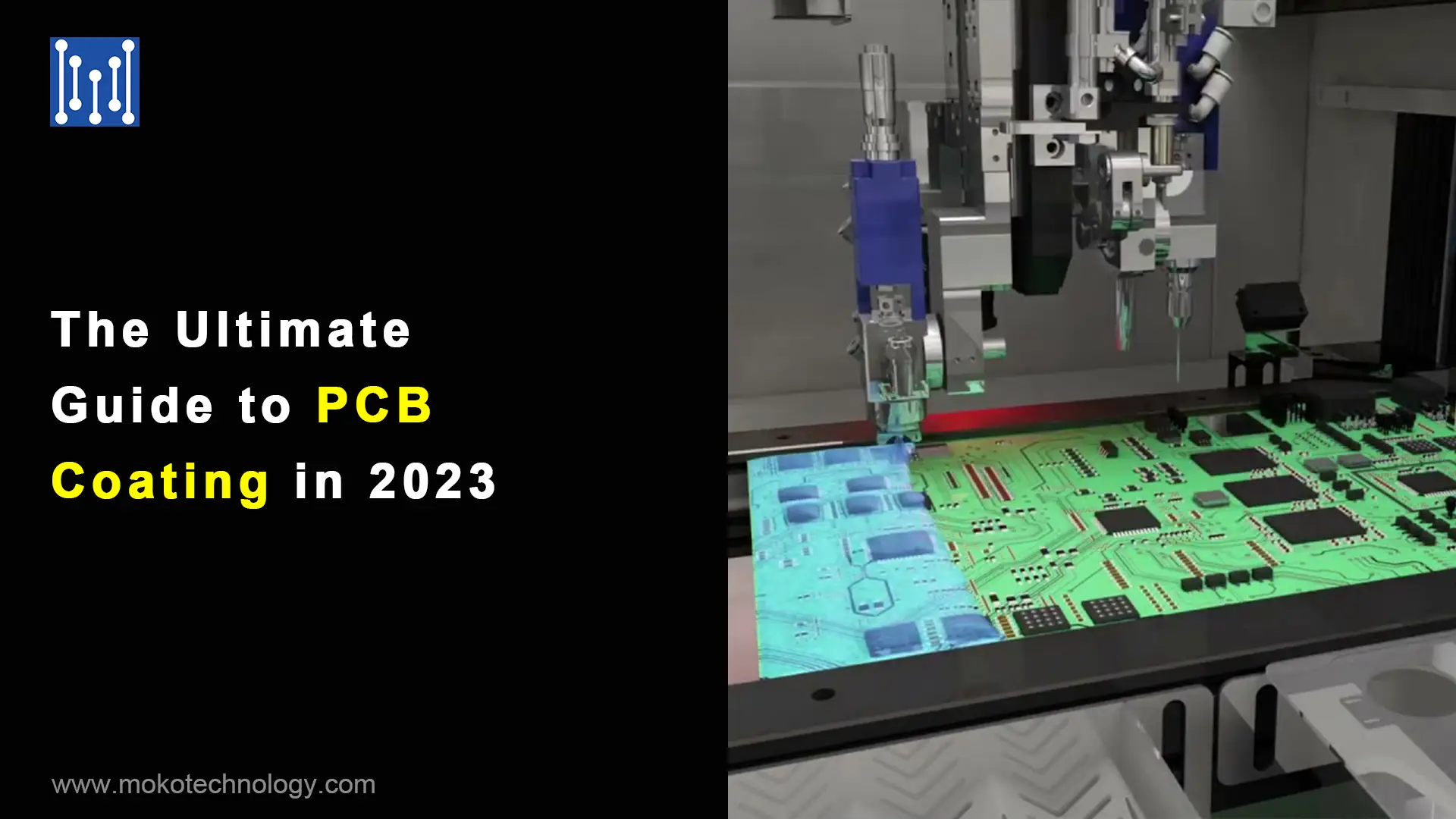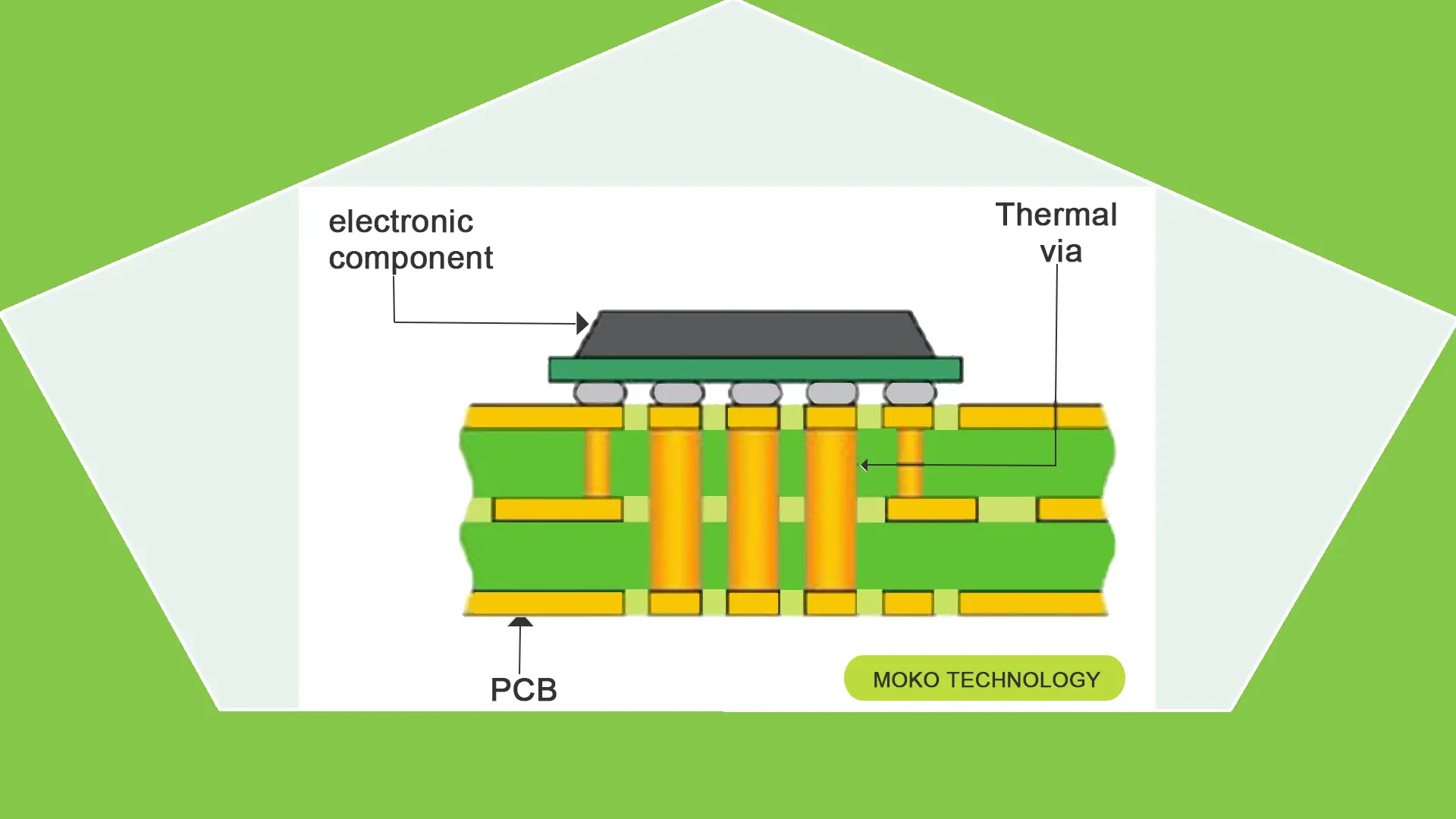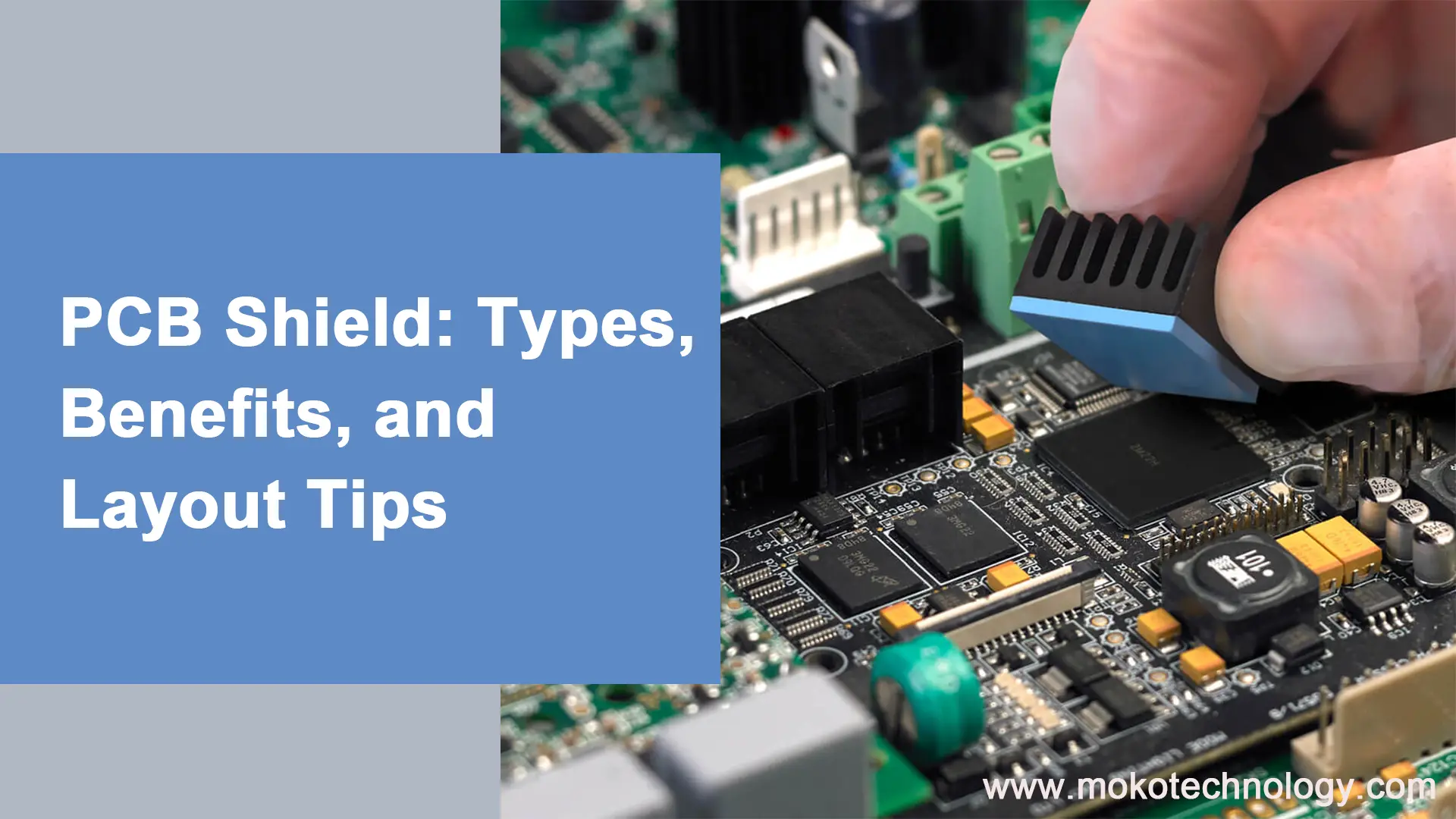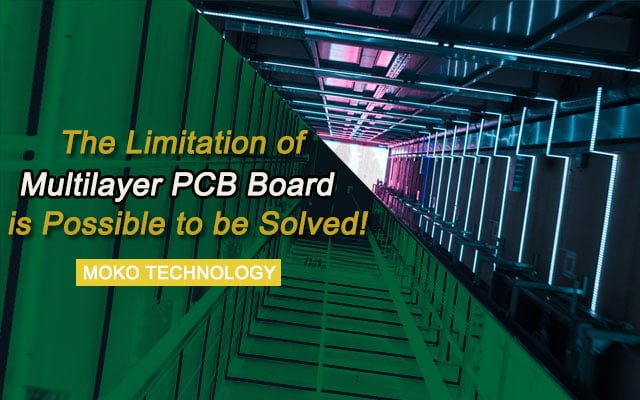Los PCB son ampliamente utilizados en varios hogares., industrial, militar, y equipo automotriz. Con el fin de garantizar el funcionamiento del equipo y prolongar la vida útil, Es fundamental garantizar que las placas de circuito y componentes en el tablero están protegidos de cualquier peligro, ya que cualquier error en ellos puede afectar el rendimiento del dispositivo o incluso causar la falla de todo el dispositivo. El recubrimiento de PCB es una forma muy efectiva de proteger la PCB.
En esta guía definitiva, Repasaremos todo lo que necesita saber sobre los recubrimientos de PCB en 2023 – desde tipos de materiales hasta métodos de aplicación y estándares de calidad. Con la estrategia de recubrimiento adecuada, puede extender significativamente la vida útil de los PCB en sus productos. Empecemos!
¿Qué es el recubrimiento de PCB??
El recubrimiento de PCB es una tecnología que protege la PCB de factores desfavorables como la corrosión., humedad, y choques físicos mediante la aplicación de una capa delgada y no conductora en la superficie de la placa de circuito y los componentes electrónicos. Con revestimiento de placa de circuito impreso, se reduce la posibilidad de falla del circuito de la PCB y los componentes electrónicos, y la vida útil del producto electrónico final también se puede extender.
Tipos de recubrimiento de PCB
En cuanto a los materiales utilizados., Los recubrimientos de PCB se pueden dividir en cinco tipos:
- Acrílico: fácil de aplicar y reparar., destacado con buena protección contra la humedad y la abrasión, y buena resistencia mecánica. Pero este tipo de recubrimiento tiene poca resistividad a los solventes y poca resistencia a la temperatura..
- Poliuretano – igual que el acrílico, proporciona una excelente resistencia a la humedad y a la abrasión, además, proporciona una mejor resistencia a los disolventes. La baja, sin embargo, es que el recubrimiento es dificil de quitar.
- Epoxi: tiene una excelente resistencia mecánica y puede ofrecer una buena protección contra la abrasión y la humedad.. Pero los recubrimientos epoxi tienen poca flexibilidad y resistencia a la temperatura y son difíciles de reparar..
- Silicona: este tipo de recubrimiento está disponible en curado por humedad., curado ultravioleta, y curado por calor, tiene una excelente resistencia a la temperatura y la humedad, pero tiene un desempeño deficiente en resistividad a la abrasión y resistencia mecánica.
- Paralyene: los revestimientos de paralyene están disponibles para cualquier superficie., que es una opción perfecta para dispositivos utilizados en aplicaciones aeroespaciales y médicas, ya que pueden proteger los PCB de los disolventes orgánicos, reactivos inorgánicos, y ácidos. Su desventaja es que son difíciles de reelaborar..
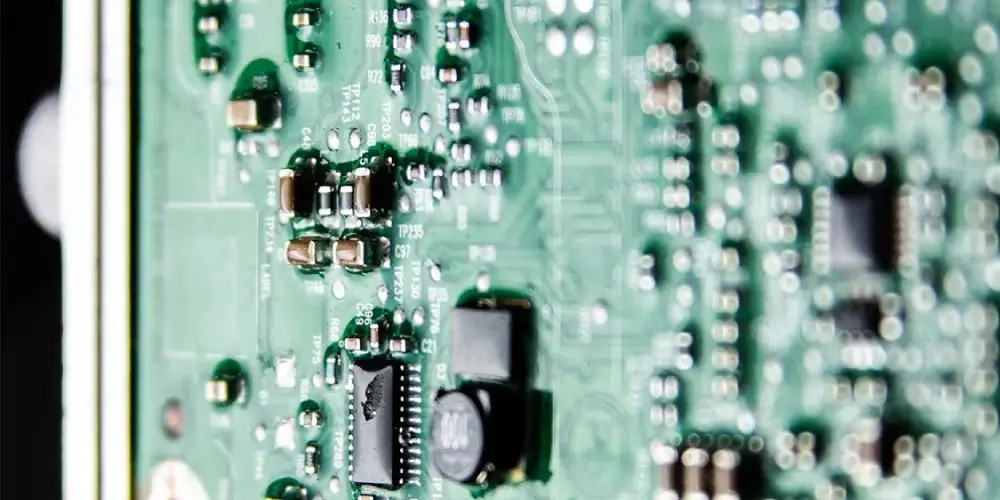 Elegir el material de revestimiento de PCB adecuado
Elegir el material de revestimiento de PCB adecuado
Ahora que entendemos las propiedades de los diferentes recubrimientos de PCB, entonces que factores debemos considerar para elegir el recubrimiento más adecuado para su proyecto? Bien, a continuación, enumeramos algunas consideraciones clave:
- Entorno operativo
Temperatura – Si la PCB estará expuesta a altas temperaturas, Los recubrimientos como la silicona o el poliuretano son más adecuados que los acrílicos.. Para ambientes de muy baja temperatura, parileno sobresale.
Humedad – Si la resistencia a la humedad es crítica, El parileno y algunos uretanos proporcionan la mejor protección contra la transmisión y absorción de vapor de agua..
Químico – Para ambientes químicos corrosivos, El parileno y el uretano generalmente tienen las mejores propiedades de barrera química..
Exposición a los rayos UV – Los acrílicos tienen buena resistencia a los rayos UV.. Las siliconas y el parileno también pueden resistir los rayos UV..
- Propiedades electricas
Resistencia dieléctrica – Esto debe exceder el voltaje máximo que transportarán las trazas de PCB. El parileno y la silicona tienen altas resistencias dieléctricas..
Resistencia de aislamiento – Un valor de megaohmios más alto indica un mejor aislamiento eléctrico. Importante para evitar corrientes de fuga.
Conductividad térmica – Capacidad de disipar el calor.. Crítico para la electrónica de potencia. Las capas de silicona ofrecen la mejor conductividad térmica..
- Propiedades mecánicas
Dureza – Los recubrimientos más duros como los epoxis y algunos uretanos proporcionan una mayor resistencia a los rayones y la abrasión..
Flexibilidad – Los recubrimientos de silicona y parileno mantienen la flexibilidad, importante para circuitos de flexión dinámica.
Adhesión – Propiedades como la química de la superficie determinan qué tan bien se une un recubrimiento al Sustrato de PCB.
- Costo
Los costos del recubrimiento de placas de PCB dependen de factores como la química de la materia prima., necesidades de equipos de procesamiento, tiempo de producción, complejidad de la aplicación, espesor del recubrimiento, capacidad de reparación, y volumen. En general, El análisis de costos compara los gastos del material de recubrimiento y del proceso de aplicación con los requisitos de rendimiento y las condiciones operativas de la aplicación final.. Evaluación de factores como la compatibilidad del material., Método de procesamiento, y la confiabilidad de por vida específica permite seleccionar el recubrimiento más rentable que aún satisfaga las necesidades técnicas.
Proceso de recubrimiento de PCB
La aplicación de una capa protectora a las placas de circuito impreso implica una preparación cuidadosa, solicitud, curación, y pruebas:
- Preparación de la superficie
Los tableros deben limpiarse a fondo antes de recubrirlos para promover la adhesión.. Las técnicas comunes incluyen limpieza con solventes y tratamientos de superficie con plasma/corona..
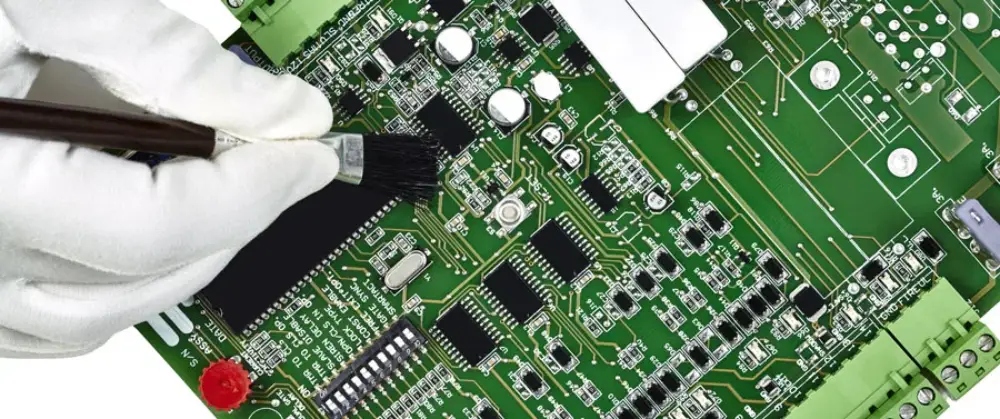
- Aplicación de recubrimiento
Existen diferentes métodos para aplicar el recubrimiento de placas de circuito impreso., ellos son:
- Pulverización manual
Este método es adecuado para tiradas de producción de bajo volumen, ya que es un proceso que requiere mucho tiempo.. Normalmente, usamos una lata de aerosol o una pistola rociadora manual para aplicar el recubrimiento, y antes de pulverizar, aquellas áreas que no requieren recubrimiento deben cubrirse. Los efectos de recubrimiento serían un poco diferentes entre diferentes lotes debido a la operación manual.
- Recubrimiento selectivo
Se refiere a un proceso de recubrimiento automático que aplica un recubrimiento a las áreas específicas de las placas de circuitos mediante el uso de boquillas rociadoras robóticas programadas., y no hay necesidad de cubrir áreas que no se van a rociar. Este proceso se presenta con alta eficiencia y precisión., adecuado para la producción de alto volumen.
- Inmersión
Para este método, Los PCB se sumergirían primero en la solución de recubrimiento y luego se retirarían. Muchos factores afectarían el efecto del recubrimiento, como la inmersión y la velocidad de extracción., tiempo de inmersión, etc.. Se requiere un enmascaramiento extenso antes del proceso de recubrimiento., por lo que es adecuado para aquellas PCB que requieren recubrimiento por ambos lados.
- Cepillado
Se utiliza un cepillo para aplicar un recubrimiento en áreas específicas., y es un método utilizado principalmente para reparar y reelaborar. El proceso lleva mucho tiempo y requiere mucha mano de obra., el efecto de recubrimiento final depende de la competencia del operador.
- Curado/Secado
Los métodos de curado comunes incluyen el curado térmico., curado ultravioleta, y curado de humedad. Los controles estrictos del proceso durante el curado son vitales para garantizar que los recubrimientos se reticulen completamente sin volverse excesivamente quebradizos.. El método de curado se selecciona para que coincida con la química del polímero y satisfaga las necesidades de eficiencia y rendimiento..
- Pruebas
La prueba es una fase importante para verificar el rango de rendimiento y las limitaciones del recubrimiento con aislamiento de circuito en diversas condiciones ambientales para obtener las características deseadas.
Un revestimiento ideal tiene una característica de adhesión excesiva., buenas propiedades electricas, y características físicas con baja humedad. Estas pruebas para la prueba de revestimiento implican pruebas básicas y avanzadas.. primero, Las pruebas básicas verifican la humedad acelerada y el rendimiento eléctrico.. Segundo, las pruebas avanzadas comprueban la niebla salina, cambio ambiental rápido, y el límite de temperatura.
tarjeta de circuito impreso Junta Estándares de recubrimiento
En revestimiento de conformación, Hay una serie de estándares de recubrimiento de PCB que requieren su uso bajo ciertas condiciones, como en el ámbito militar., automóvil, uso doméstico, etc.. Por lo general, los recubrimientos de conformación califican para la especificación MIL-I-46058C o IPC-CC-830B, que se relaciona estrechamente con MIL-I-46058C..
MIL-I-46058C: Un estándar de revestimiento conformado común en la industria, también conocido como compuesto aislante militar. Requiere pruebas de cualquier laboratorio autorizado por MIL y todavía se usa incluso después de la desactivación ya que 1998 para nuevos diseños. Esta prueba requiere una lista de productos calificados estándar (QPL).
Def Stan 59/47: Un estándar similar al 46058C utilizado para recubrir dispositivos de alta gama para uso militar, pero el Ministerio de Defensa del Reino Unido debe aprobarlos primero.
IEC 61086: Un estándar basado en la autocertificación del proveedor con requisitos similares a 46058c. La Comisión Electrotécnica Internacional lo gobierna.
IPC-CC-830B: Estándar utilizado y actualizado de forma activa similar al 46058C, introducido cuando 46058C permanece inactivo. Material estandarizado para 46058C que sigue estas especificaciones. No hay pruebas disponibles ya que no se mantiene QPL.
UL94V0: Se relaciona con la propiedad de revestimiento conforme de autoextinguible en un sustrato FR4. V0 es la categoría más alta alcanzable con V1 y V2 como sus sucesores..
